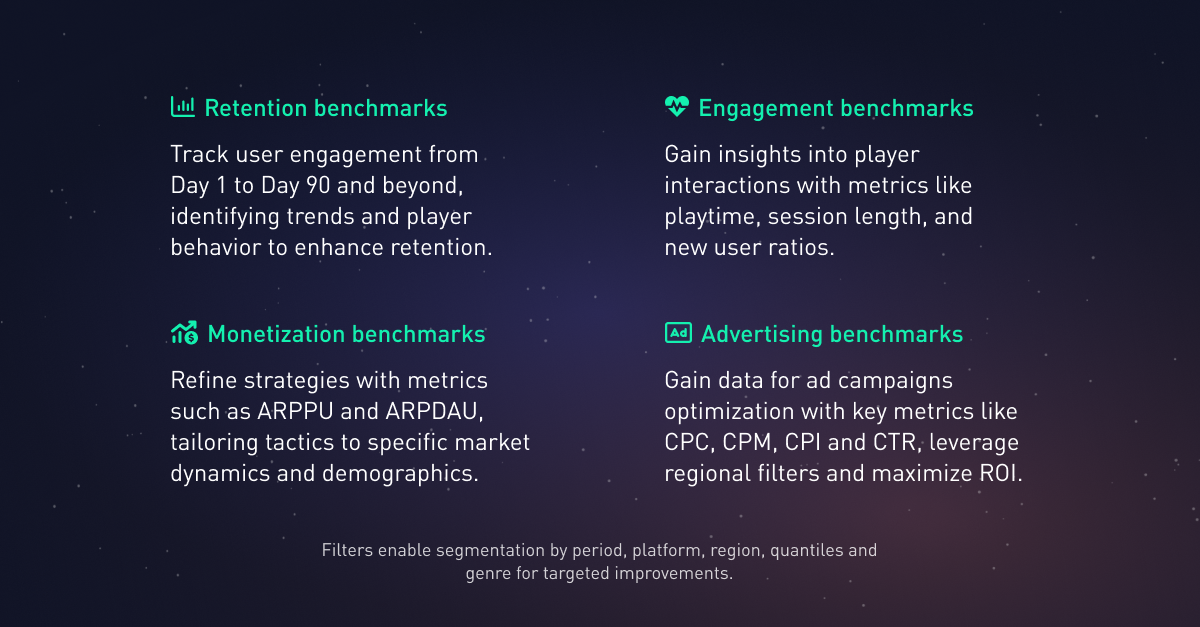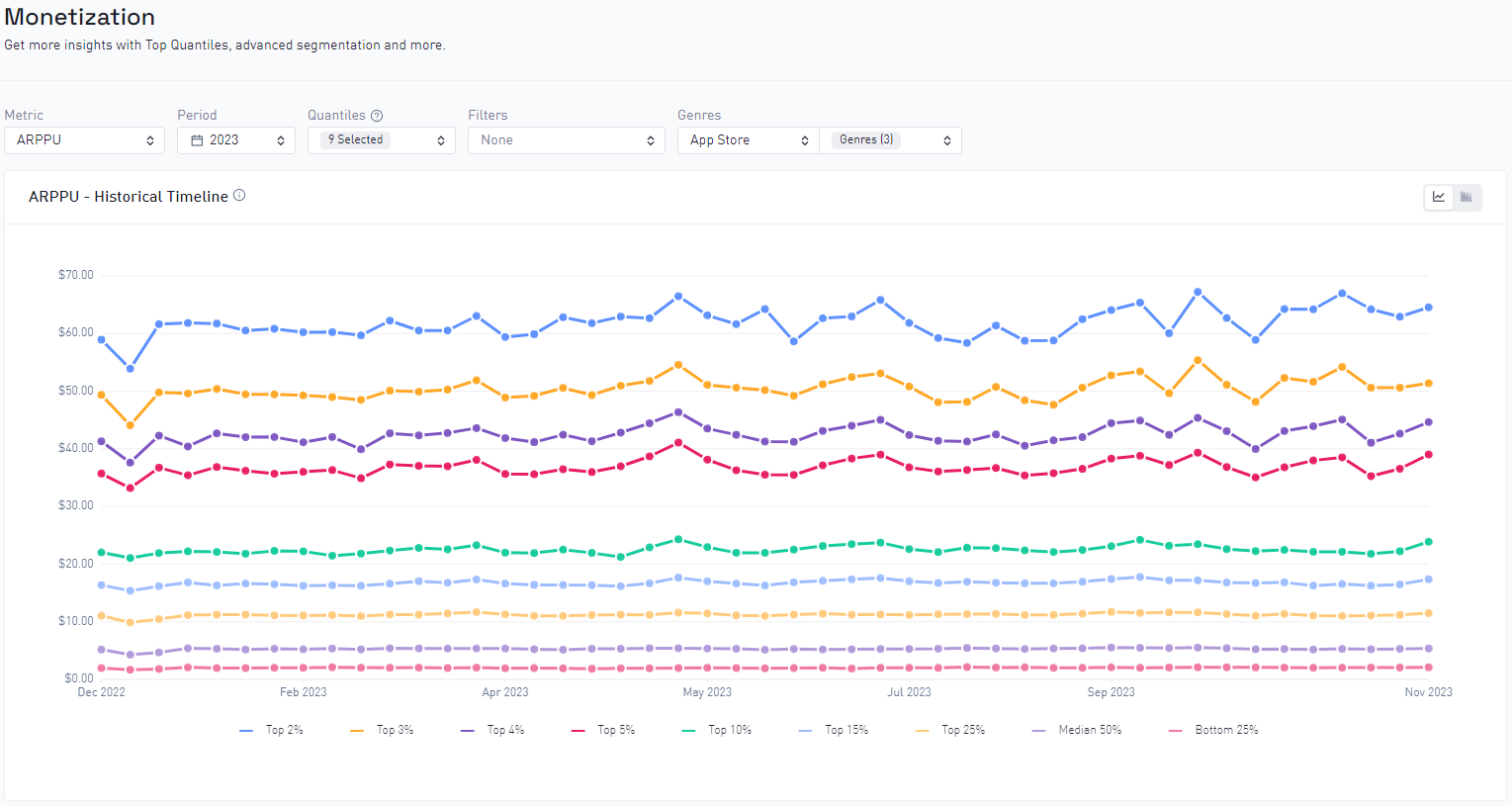· 4 min read
Leveraging game industry benchmarks to scale your games

Tomas Hubka
Marketing Manager at GameAnalytics
Achieving success when creating a game requires more than creativity and innovation. Knowing and correctly interpreting your KPIs is undoubtedly the foundation of making educated decisions during game development. And to support you on your data journey, we compiled a list of the 22 most essential metrics to keep an eye on.
But while paying attention to your game performance cannot be overstated, it is equally important to deeply understand player preferences and industry standards. From performance comparison to trend identification, game industry benchmarks offer a grand scale to set realistic goals and expectations.
Providing data and insights from over 140,000 game studios and developers, our Benchmarks are a powerful ally for game developers. The tool offers a wealth of information on key metrics such as retention, monetization, engagement, and advertising, enabling developers to understand player behavior and market trends better.
Before we delve into concrete steps to guide you through interpreting the benchmark data, learn about various benchmark tables, associated metrics, and filtering possibilities:

How game developers benefit from industry benchmarks?
When comparing your game to other studios and developers, holistic data about player retention gives developers insights into how other games retain players. This data is valuable for understanding how players engage with games over time and allows developers to benchmark their game’s performance against industry standards.
You can, for example, analyze retention trends within your game’s genre to understand player behavior patterns unique to that category. Similarly, by examining retention benchmarks over different time periods, you can track player engagement changes and identify potential improvement areas. Such analysis can help identify correlations between different metrics and provide insights into player engagement and retention strategies.

Relying solely on individual benchmarks may provide a limited perspective. Instead, we recommend a holistic approach by comparing and contrasting several benchmarks to unveil deeper insights. Such multifaceted analysis enriches your understanding of player dynamics and allows you to refine your strategies.
For instance, by analyzing how changes in session length correlate with retention rates, developers can pinpoint optimal session durations that keep players coming back for more. Similarly, understanding how playtime affects retention can inform decisions about game pacing, content depth, and progression mechanics to enhance player engagement over time.
Insights into monetization trends
Monetization benchmarks are essential to measure the effectiveness of in-game monetization strategies and assess the overall financial performance of their genre. These benchmarks provide insights into key revenue metrics such as conversion rates, average revenue per daily active user (ARPDAU), and average revenue per paying user (ARPPU).

Once again, comparing with other benchmarks will only deepen your understanding of the market. For example, comparing monetization benchmarks to engagement metrics involves analyzing how revenue metrics like ARPDAU correlate with key engagement indicators such as session length, session count, and retention rates. If higher ARPDAU coincides with longer session lengths or higher retention rates, it suggests that players who engage more deeply are more likely to spend. Conversely, if monetization metrics are low despite strong engagement, it may indicate opportunities to optimize monetization mechanics or offer more compelling in-game purchases. By identifying these correlations, you can refine your monetization strategies and maximize revenue potential while maintaining a positive player experience.
Focus on your target player and keep testing
Segment analysis is a powerful strategy for deriving actionable insights from GameAnalytics’ Benchmarks. Filtering the data based on various parameters, such as time period, genre, region, or platform, will allow you to customize game features, content, and monetization strategies to suit specific player groups better.
To achieve the best improvements possible, you can conduct A/B tests to experiment with different game features, mechanics, and monetization strategies. GameAnalytics Pro allows you to roll out a discovery you made through A/B testing, target users in a specific country, build or operation system version, and set a config to switch ON/OFF at a specific time directly in the tool.
GameAnalytics’ Benchmarks are simply a treasure trove of data-driven insights for game developers. By leveraging its comprehensive dataset, you can refine the entire portfolio of your games, optimize engagement and monetization strategies, and ultimately scale the games for success.